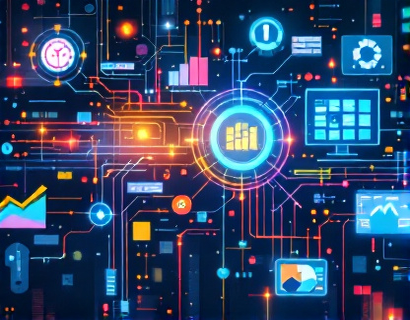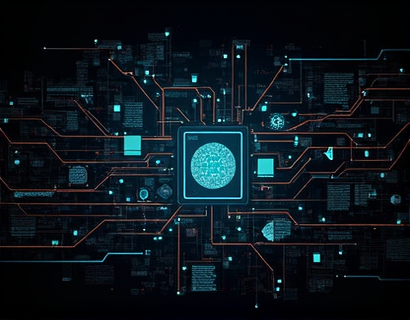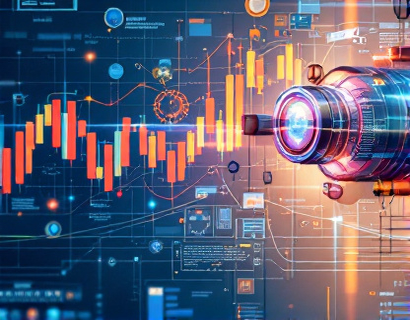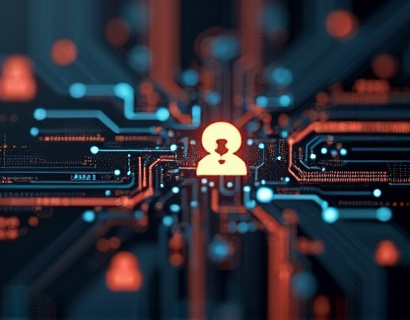AI and Crypto: Pioneering Digital Transformation for Enhanced User Experiences
The intersection of artificial intelligence and cryptocurrency is redefining the digital landscape, offering unprecedented opportunities for innovation and user engagement. This article explores the transformative impact of these advanced technologies, focusing on how their synergy can create seamless, engaging, and innovative interactions within the crypto tech ecosystem. For tech enthusiasts and digital innovators, understanding this synergy is crucial to staying ahead in the rapidly evolving digital world.
The integration of AI and cryptocurrency is not just a technological curiosity but a practical solution to some of the most pressing challenges in the digital space. AI brings intelligence, automation, and personalization to the crypto domain, while cryptocurrency offers a decentralized, secure, and transparent medium for transactions. Together, they form a powerful duo that can revolutionize user experiences across various sectors, from finance to entertainment.
Enhancing Security with AI
One of the primary advantages of combining AI with cryptocurrency is the significant enhancement in security measures. Traditional security protocols, while robust, are often static and vulnerable to sophisticated cyber threats. AI introduces dynamic and adaptive security systems that can detect and respond to threats in real-time. Machine learning algorithms analyze patterns and anomalies, identifying potential security breaches before they occur. This proactive approach ensures that crypto transactions remain secure and trustworthy, fostering greater user confidence in the system.
For instance, AI-driven fraud detection systems can monitor transaction patterns and flag suspicious activities with high accuracy. These systems learn from past incidents and continuously improve, making them highly effective against emerging threats. By integrating such AI solutions, crypto platforms can offer a safer environment for users, reducing the risk of financial loss and enhancing overall trust in the technology.
Personalized User Experiences
AI's ability to process vast amounts of data and derive meaningful insights makes it an ideal tool for personalizing user experiences in the crypto space. Users can benefit from tailored recommendations, customized interfaces, and personalized alerts based on their preferences and behavior. This level of personalization not only enhances user satisfaction but also increases engagement and retention.
For example, AI algorithms can analyze a user's trading history and market preferences to suggest optimal investment strategies. Personalized dashboards can display relevant information, such as market trends, news, and alerts, all curated to the individual user's needs. This tailored approach ensures that users receive the most relevant and useful information, making their interaction with crypto platforms more efficient and enjoyable.
Streamlining Transactions with AI
AI can significantly streamline the transaction process in the crypto world, making it faster, more efficient, and user-friendly. Automated trading bots powered by AI can execute trades based on predefined criteria, allowing users to capitalize on market opportunities without constant monitoring. These bots can adapt to changing market conditions, optimizing trade execution and maximizing returns.
Additionally, AI can simplify the onboarding process for new users. By using natural language processing and chatbots, platforms can guide users through the setup and configuration steps, reducing the learning curve and making the experience more accessible. This not only attracts new users but also helps retain existing ones by providing a seamless and intuitive experience.
Smart Contracts and AI
Smart contracts, self-executing contracts with the terms directly written into code, are a cornerstone of blockchain technology. When combined with AI, smart contracts can become even more powerful and versatile. AI can enhance the functionality of smart contracts by adding intelligent decision-making capabilities, allowing them to adapt to dynamic conditions and execute complex logic.
For instance, AI can be used to predict market movements and automatically adjust the terms of a smart contract based on these predictions. This dynamic adjustment ensures that contracts remain relevant and beneficial, even as market conditions change. Such advancements open up new possibilities for decentralized applications, making them more robust and user-friendly.
Enhancing Market Efficiency
The integration of AI and cryptocurrency can also lead to more efficient markets. AI algorithms can analyze vast amounts of data from various sources, providing deeper insights into market trends, sentiment, and liquidity. This data-driven approach enables more informed decision-making, reducing the impact of speculative trading and increasing market efficiency.
AI can also help in identifying arbitrage opportunities by quickly detecting price discrepancies across different exchanges. Automated trading systems can exploit these discrepancies in real-time, ensuring that prices converge and the market operates more fairly. This not only benefits traders but also contributes to a more stable and efficient market environment.
Improving Liquidity with AI
Liquidity is a critical factor in the crypto market, affecting the ease with which assets can be bought and sold. AI can play a significant role in enhancing liquidity by optimizing order matching and reducing slippage. Advanced algorithms can analyze market depth and user behavior to match orders more effectively, ensuring that trades execute at the best possible prices.
Moreover, AI-driven liquidity provision models can attract more participants to the market by offering incentives based on their contribution to liquidity. By using machine learning to predict liquidity needs and optimize reward structures, platforms can maintain a healthy and active market, benefiting all participants.
User Behavior Analysis and Feedback
Understanding user behavior is essential for improving crypto platforms and services. AI can analyze user interactions, feedback, and preferences to provide valuable insights for developers and service providers. This data-driven approach allows for continuous improvement, ensuring that platforms meet the evolving needs and expectations of users.
For example, sentiment analysis can gauge user emotions and opinions from social media and forums, helping to identify areas for enhancement. By addressing user concerns and incorporating feedback, platforms can foster a more positive and engaging user experience. This proactive approach to user feedback not only improves satisfaction but also builds a loyal community around the platform.
Decentralized AI Solutions
The future of AI in the crypto space is also being shaped by decentralized AI solutions. Decentralized AI platforms allow for the collaborative development and deployment of AI models, leveraging the collective power of the network. This approach democratizes access to advanced AI technologies, enabling smaller players and developers to create innovative applications without the need for significant resources.
Decentralized AI can also enhance privacy and data security. By using federated learning, models can be trained across multiple devices without centralizing sensitive data. This ensures that user data remains private while still benefiting from the collective intelligence of the network. Such solutions align with the core principles of blockchain, promoting transparency, security, and decentralization.
Challenges and Considerations
While the potential benefits of AI and cryptocurrency are substantial, there are also challenges and considerations that must be addressed. One of the primary concerns is the regulatory landscape. As AI and cryptocurrency continue to evolve, regulators are grappling with how to oversee these technologies to prevent misuse and ensure compliance. Staying informed about regulatory developments is crucial for platforms and users alike.
Another challenge is the technical complexity involved in integrating AI with crypto systems. Developing robust and secure AI solutions requires expertise in both domains, which can be a barrier for some players. Collaboration between AI experts and crypto developers is essential to overcome these technical hurdles and create seamless integrated solutions.
Conclusion
The synergy between AI and cryptocurrency is poised to drive significant advancements in the digital landscape, offering enhanced security, personalized experiences, streamlined transactions, and more efficient markets. As these technologies continue to mature, the potential for innovation and user engagement in the crypto tech ecosystem will only grow. For those eager to stay ahead, understanding and embracing this powerful combination is key to unlocking new opportunities in the evolving world of digital transformation.










































